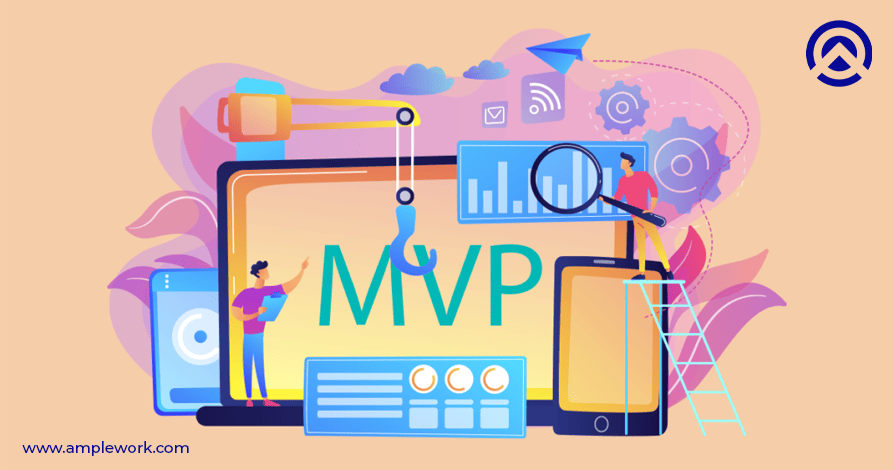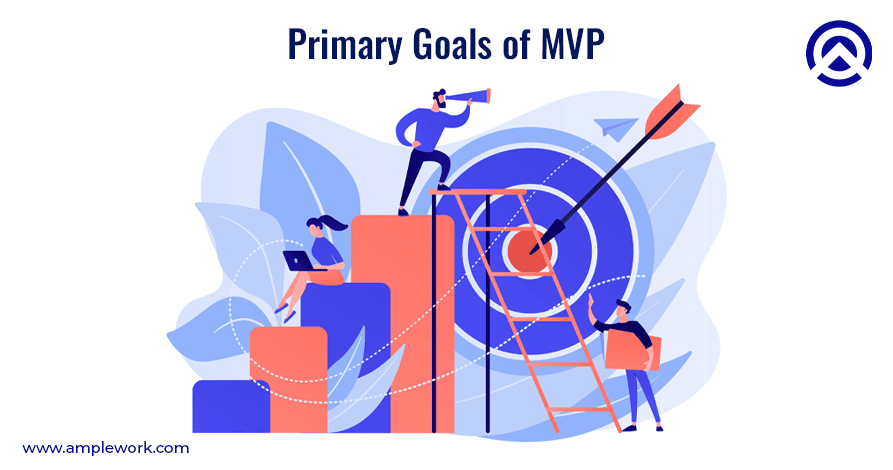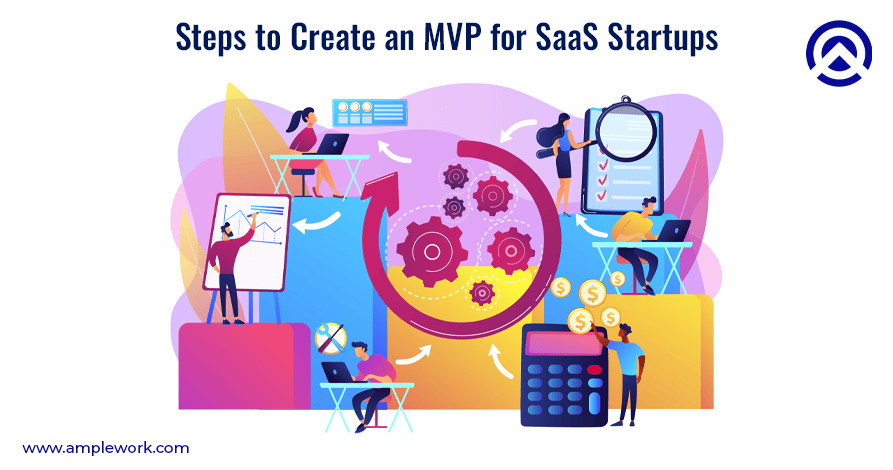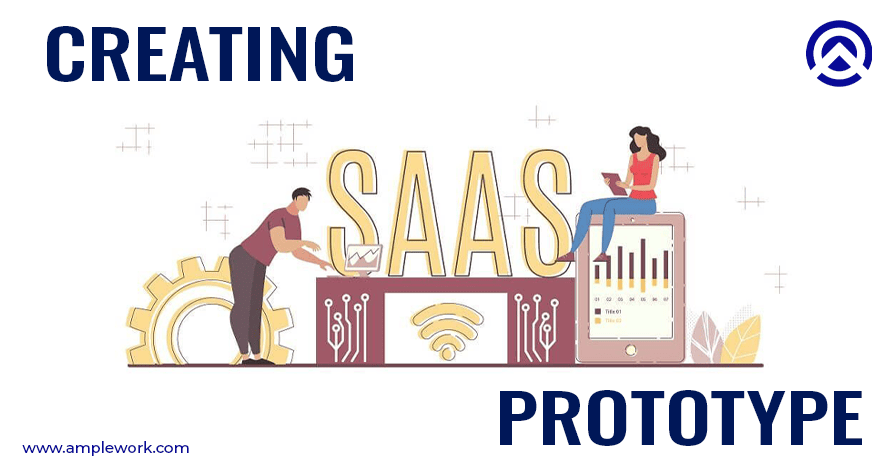A Step-by-Step Guide: Crafting the Perfect MVP for SaaS Startup
Starting a Software as a Service (SaaS) startup can be an exhilarating journey, full of opportunities and challenges. In the competitive world of SaaS, having a well-thought-out MVP for SaaS startup is crucial to your success. Your MVP is the foundation upon which you build your product, gather feedback, and iterate toward a market-fit solution. Crafting the perfect MVP is a critical step in this process. SaaS is one of the robust platforms that is beneficial for businesses, just because of its features and functionalities that are offered by this platform, enabling businesses to create a perfect software solution for their clients in just one go.
In this technological era that is full of growing technologies, SaaS application development has faced rapid growth in the past few years. It is also proven by “Fortune Business Heights” that by the year 2028 the SaaS market will grow with a market worth of approximately USD 716.52 Billion. Since the growth in SaaS startups that are looking to launch their product in the market, MVP app development has proven to be the best choice for such startups. Which enables the launching of the product in the market with a minimal amount of features and functionalities. Thus saving both the time and cost of these businesses. In this comprehensive guide, we will walk you through the step-by-step process of creating the ideal MVP for SaaS startup.
Here are Some Statistical Outcomes
As per the latest research trends conducted by the FinanceOnline, the following outcomes are derived:
- According to this research, From the year 2019 to 2013 the Global SaaS market is predicted to grow with a net worth of around 60.36 Billion With more than 9% of the Compound Annual growth rate.
- The global cloud computing market size is expected to reach from USD 371.4B in the year 2020 to $832.1B by the year 2025.
Understanding MVPs
Before diving into the specifics of crafting an MVP, let’s clarify what it is. A Minimum Viable Product (MVP) is the most basic version of your software that allows you to test your product hypothesis with the least amount of effort. It is not the full-featured final product but a stripped-down version that serves the core purpose. MVPs are proven to be the most efficient and feasible for businesses just because they facilitate rapid product development with a minimum amount of necessary features. Thus providing you with a complete idea of your product, about whether it is useful for the target market or it will succeed in the market or not.

These MVPs save both time and money, for the businesses which is the reason why it is gaining more and more success with time. Today most businesses prefer MVP development before they start building the actual final product. Just because of this MVP development for startups has now become a crucial step in the validation of your ideas to check whether they’re performing well in their desired marketplace.
The Primary Goals of an MVP are:

1. Validate your business idea:
Validating your business idea provides you with complete assurance about the product that you are going to launch in the market. It Ensures there is demand for your product before investing significant resources. Not only ensures the idea validation but also sometimes gathers the audiences and even the investors for your final product. This validation of business ideas is also important because it saves both time and the resources that you spend in creating the final product.
2. Gather user feedback:
With the help of MVP software development, businesses provide a simple product to their targeted audiences with the motive of getting feedback from them. This feedback provides them with the basic ideology about the preferences of their audiences and also about whether their product is liked by the audiences or not. By which they can easily learn from early users to make informed decisions about product development. It also provides detailed information to them describing whether they should launch the final product in the market or not.
3. Reduce time to market:
The MVP or minimum viable product is a limited aspect of the original product that consists of only the necessary features and functionalities. Its development process is also much easier and time-saving. It not only saves the time of the MVP app development company but also saves the time of the business that is going to launch it in the market. As it enables you to get your product into the hands of customers as quickly as possible. Resulting in the earlier client’s feedback as well as the easy and faster launching in the market.
4. Saving Resources & Efforts of Businesses:
Building an MVP leads to the savior of both the resources and efforts of the businesses. Whenever your SaaS startup needs to build up its product and launch it in the market, MVP app development retains all the resources that you incur in crafting the final product. Since it includes a limited amount of necessary features and functionalities, creating MVP also reduces the efforts of your business.
Read more: How to Develop an MVP for Secure Fundraising in 2023
Step-By-Step Guide Crafting a Perfect MVP For SaaS Startup

1. Define Your Target Audience
Understanding your target audience is the foundation of your MVP. You need to know who your ideal customers are, what problems they face, and how your SaaS solution can solve those problems. You should conduct thorough market research to identify your target audience’s pain points, preferences, and behaviors. Also, you should research about the latest market trends and requirements of your targeted audiences.
2. Identify the Core Problem
Once you’ve defined your target audience, pinpoint the core problem your SaaS product aims to solve. Your MVP should focus exclusively on addressing this problem. Avoid feature creep or trying to solve multiple problems at once, as this can lead to a diluted and ineffective MVP. Just because when you are highlighting multiple problems then it shifts the user’s attention, which sometimes results in the disliking of your idea. You should clearly and concisely highlight your core problem during the MVP development process.
3. Set Clear Objectives
Before building your MVP, establish clear objectives and key performance indicators (KPIs) that will help you measure its success. These objectives should align with your business goals and be specific, measurable, and time-bound. Common MVP objectives include acquiring a certain number of users, achieving a specific conversion rate, or receiving positive feedback from early adopters. Clear objectives give clarity to the developers that ease the development process for them facilitating hassle-free MVP development.
4. Prioritize Features
Now that you know your target audience and the core problem you’re addressing, it’s time to prioritize features. Identify the essential features that directly address the core problem and leave out any non-essential elements. Keep your MVP as simple as possible to accelerate the development and testing process. It not only speeds up the mobile app development process but also helps your targeted audiences to easily understand that for what purpose you have created the product. Thus increasing your product’s success rates.
5. Build a Prototype

Before diving into full-scale development, create a prototype or wireframe of your MVP. This low-featured version of your product allows you to visualize the user interface and user experience (UI/UX) without investing significant resources in the product. Prototyping tools like Figma or Sketch can help you quickly iterate and refine your design. This prototype provides a clear design view of the MVP that you are crafting. It is feasible also just because it enables the changes to your design at the point of starting.
6. Develop the MVP
With your prototype in hand, it’s time to start building your MVP. Leverage your development team or hire MVP developers with expertise in the technologies required for your SaaS product. Make sure that your focus here must be only on functionality, not perfection. Aim to develop just enough to solve the core problem and gather valuable feedback. This will help in reducing the development time and resources that are indulged in the development process.
7. Testing
Once your MVP is developed, it’s crucial to test it with real users. Encouraging its early users to use your product and provide feedback. You should pay close attention to their pain points, suggestions, and any technical issues they encounter. Use this feedback to iterate and improve your MVP continually. This leads to continuous improvisation in your product.
Also Read: A/B Testing for MVP: Making Data-Driven Decisions for Success
8. Measure Key Metrics
Refer back to the objectives and KPIs you set in the step 3 where you have identified the clear objectives for the MVP. Start measuring these metrics as users engage with your MVP. Analyze the data clearly with efficacy to gain insights according to user behavior, conversion rates, and other relevant performance indicators. This data will inform your decisions in the next steps of your startup journey.
9. Gather User Feedback
In addition to quantitative metrics, gather qualitative feedback from users. Conduct surveys, interviews, and usability tests to gain a deeper understanding of user needs and pain points. This feedback is invaluable for refining your MVP and guiding future product development. It also helps you in improvising your product with continuity, thus making it more efficient for its targeted audiences. You should concentrate on regularly collecting feedback from the users who are using your product.
10. Iterate and Refine
Based on the insights gained from testing, metrics, and user feedback, you should continuously keep on iterating on your MVP. Make necessary improvements and enhancements to your product according to addressed user concerns and optimize the user experience. Continue this iterative process until your product doesn’t fit your targeted markets, driving the growth toward your business.
11. Plan for Scalability
While your MVP is designed to be minimal, it should also be scalable. As you gather more users and data, plan for the future growth of your SaaS product. Ensure that your architecture and infrastructure can handle increased demand without major disruptions. Not only scalable but it should be adaptive for easily adapting the changes that you should consider according to the user’s considerations and feedback regularly.
12. Prepare For the Launching
Once you are confident that your MVP meets the needs of your target audience and has achieved your predefined objectives, it’s time to prepare for a full-scale launch. You should create a marketing strategy, build a user acquisition plan, and establish customer support processes to provide a seamless experience for your users. Your marketing strategies must be efficient enough to promote your product to your desired market so that the audiences might easily get attracted to your MVP.
13. Monitor and Optimize
After the official launch of your product, your work has not ended till here, instead, it has started. You should continuously monitor user’s behavior, gather feedback, and optimize your SaaS product. The market is ever-evolving, and staying responsive and adaptable toward user needs is key to long-term success for both your product and business. You should also keep on maintaining your product regularly and try to upgrade it as per the user’s requirements.
Also Read: Unlock Minimum Viable Product Success via Asking Questions
Conclusion
Crafting the perfect MVP for SaaS startup is a meticulous and iterative process. By following these steps, you can create an MVP that not only validates your business idea but also sets the stage for future growth and success. Remember that an MVP is not a one-time endeavor but a continuous journey of improvement and adaptation. Stay focused on your target audience, the core problem you are solving, and the data-driven insights you gather, and you will be well on your way to building a thriving SaaS business solution fulfilling all the needs of your targeted audiences with complete efficacy. So if you are looking to create MVP for SaaS startup just consult your nearby MVP product development consultant, who help you shape your ideas into innovations.
Amplework Software is a leading MVP development company that crafts your Desired SaaS-based MVP for your businesses, with the minimum viable features and functionalities. Our team of experts works on innovative approaches, creating the most efficient and feature-rich solutions that actually accelerate your business growth.



 sales@amplework.com
sales@amplework.com
 (+91) 9636-962-228
(+91) 9636-962-228





